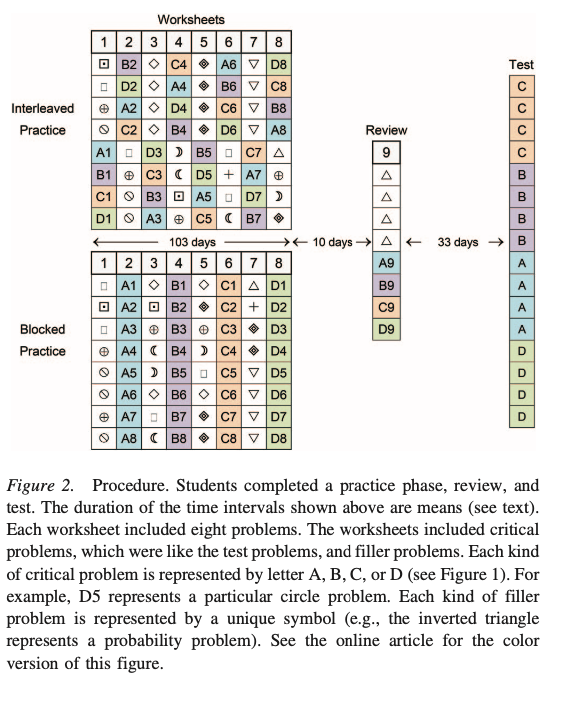Andyʼs working notes
About these notesRohrer, D., Dedrick, R. F., Hartwig, M. K., & Cheung, C.-N. (2020). A randomized controlled trial of interleaved mathematics practice. Journal of Educational Psychology, 112(1), 40–52
A rigorous study comparing blocked and Interleaved practice of math problems in real classrooms. It’s a large study: 787 students in 54 classes in 5 schools in a single school district. They found a large positive result:
On the test, the interleaved group outscored the blocked group by a large margin. Table 6 lists descriptive measures. The effect size was large, Cohen’s d 0.83, 95% CI 0.68, 0.97,
Interleaved practice creates a natural context for the Spacing effect and Testing effect:
In addition to any benefits of mixture per se, the interleaving of practice problems in a course or text inherently incorporates the learning strategies of spacing and retrieval practice, each of which is an effective and robust learning strategy.
Although we did not measure students’ time on task, every teacher reported that the interleaved assignments took more time than did blocked practice. To the extent that this was true, the observed interleaving effect would have been smaller if it had been measured per unit of time invested by the student.
What an incredible hassle it must have been to do this study:
We received written permission from the university IRB, the school district, the principal of each participating school, each teacher, each student, and a parent of each student.

The interval between practice and test was pretty long: at least one month. It’s interesting to note how low the test scores were: means of 37% for blocked practice and 61% for interleaved practice.